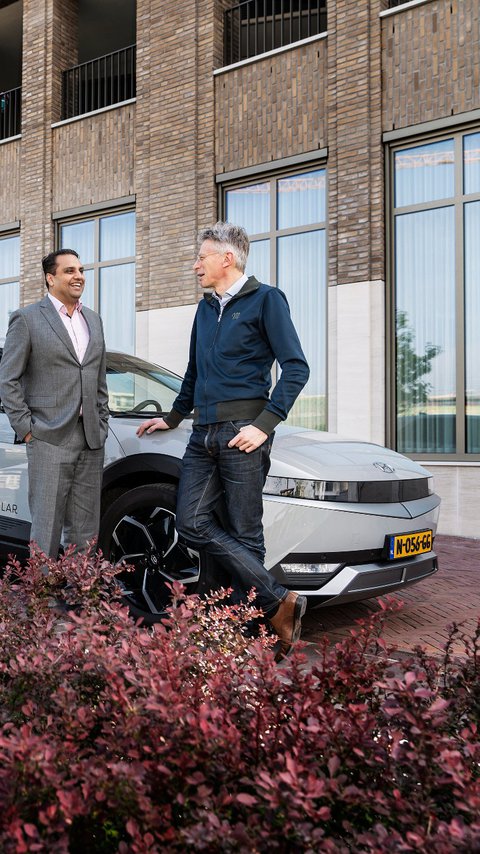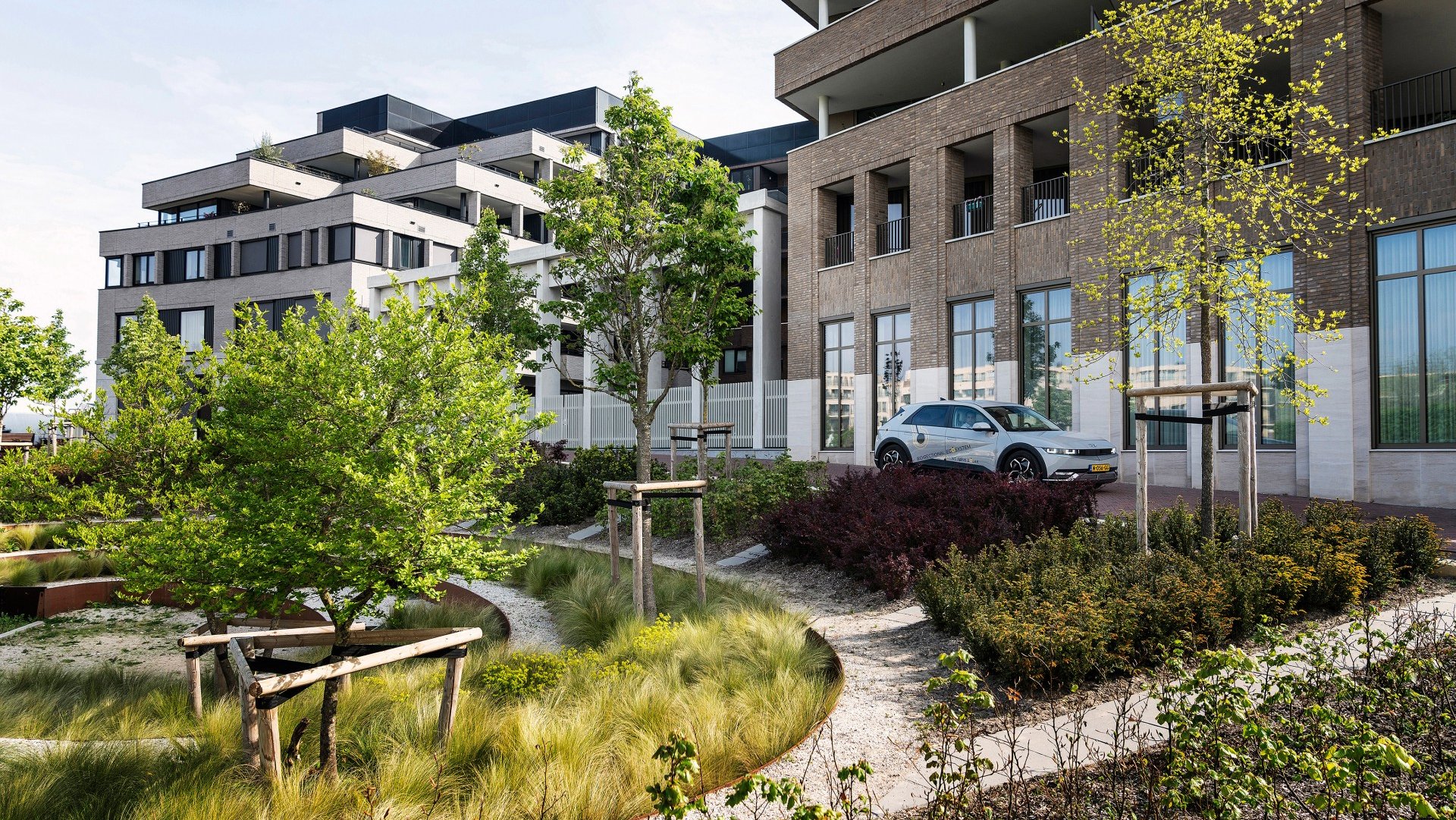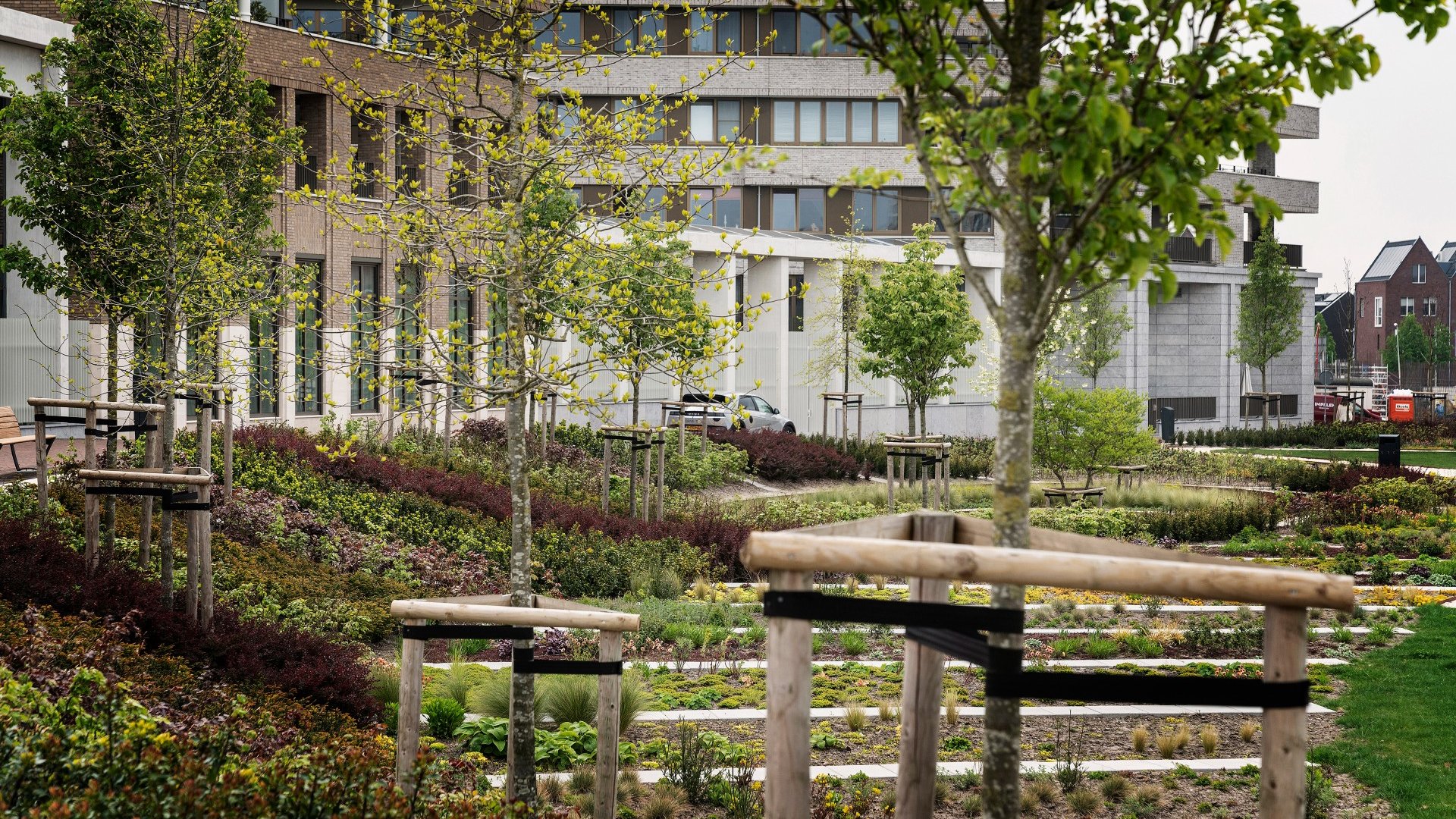
Heijmans and We Drive Solar have a worldwide first at the Greenville housing complex in Leidsche Rijn Centre. In Greenville, electric cars are charged via solar panels on the roof, and that energy is returned to the residents via the bi-directional charging stations. The result: more sustainable living. Shahid Talib and Robin Berg explain how this works.
Anyone seeing the Greenville residential complex for the first time cannot help but agree that the name of the project was a perfect choice. In the middle of Leidsche Rijn Centre, Greenville offers 125 apartments with lots of green, light and space. Sustainability was a major priority right from the start of the project. The almost 1,200 solar panels on the roof and on the façade give the complex an energy performance coefficient (EPC) of -0.3.
This makes the bi-directional charging stations residents can use to charge and discharge shared cars a perfect fit for Greenville. Shahid Talib, Heijmans Smart City Director, explains: "Heijmans wants to create a healthy living environment for residents. To do this, we look for solutions to social problems. Shared mobility increases the liveability of the neighbourhood. It reduces traffic, CO2 emissions and traffic jams in the neighbourhood. This is why we make electric shared cars available to residents in many of our projects. Here in Utrecht, we were able to take a big step forward together with We Drive Solar. With bi-directional charging, we have developed a sustainable, smart energy system for the entire residential complex."
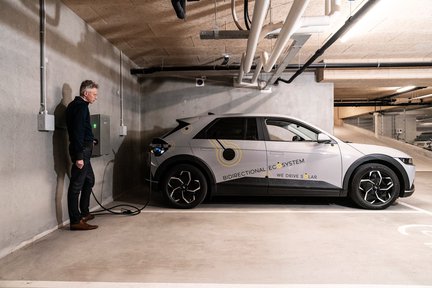
Home battery
You can see it as a kind of home battery. Right now, the two electric shared cars are being charged by the solar panels on the Greenville roofs and façade. Residents can of course use that electricity to drive the cars, but the energy can also be used for lighting, the lift, the washing machine or cooking on electricity. Robin Berg, director of We Drive Solar, explains the source of the initiative: "Solar energy is a wonderful source, but it has one major drawback: the sun is not always available. It is precisely at times of high energy demand, such as in the morning or evening, when there is less or no sun. That's why at We Drive Solar we were looking for a way to store energy. Bi-directional charging is the solution. This enables us to store solar energy in the shared cars and give it back to the residents."
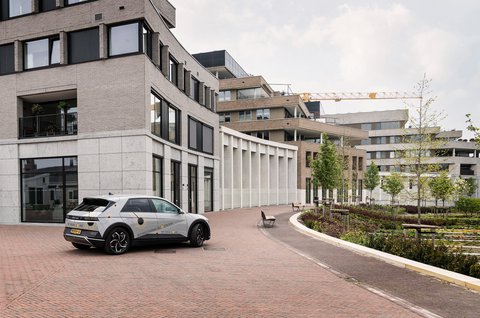
Sustainable and cheap
The garage beneath the residential complex now has one bi-directional charging station. A second charging station will soon be installed to the side of the building. Residents will soon be able to use a total of four electric shared cars. "One car has about 75 kilowatts per hour of battery power. That's enough to provide electricity for 10 to 20 households. If you want all of Greenville to run on solar energy, you'll need six to eight cars, but this is a good first step," says Robin.
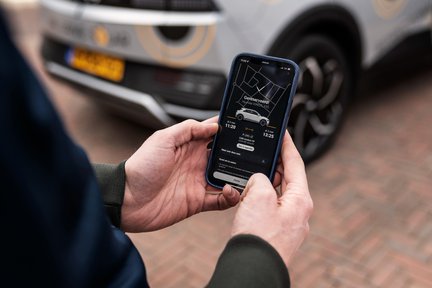
In addition to providing a large amount of renewable energy, this is also interesting for the residents of Greenville. Shahid continues: "We want to use the Energy Management System (EMS) linked to the bi-directional charging station to make energy as cheap as possible for residents. Greenville is the first residential complex where this is happening."
Although the electricity is currently still being used for common areas, such as the lift and garage lights, the EMS will also be available for individual homes in the coming years. "At that point, you will be able to use an app to control the energy use of your entire home. For example, the system will turn on the washing machine at a time that is the cheapest for you."
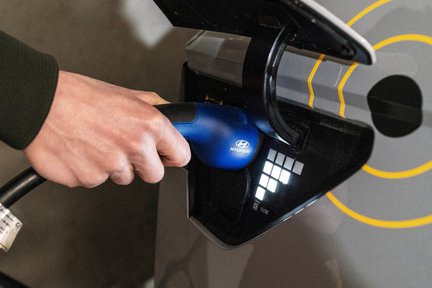
Of course, there is always enough energy in the car battery for driving. Robin: "After all, that's what the car is meant for. So we never completely discharge the battery, which is not good for it anyway. There is always about thirty to forty percent left, which is enough for a journey of 150 kilometres. The app also tells us when the next reservation is and we also ask how many kilometres a resident expects to drive. So you don't have to worry about being left stranded by the side of the road."
Contributing to the energy transition
Greenville is the pilot for bi-directional charging in Utrecht. The aim is to have 150 bi-directional electric shared cars available in Utrecht within a year, as they are in the neighbouring Heijmans Bellevue project. Both Heijmans and We Drive Solar see lots of opportunities for the future. This is why the two companies are working together on the continued development of bi-directional charging and EMS. Shahid: "In addition to new-build projects, we also want to offer this in existing Heijmans and non-Heijmans projects. This will enable us to make a real contribution to the energy transition."
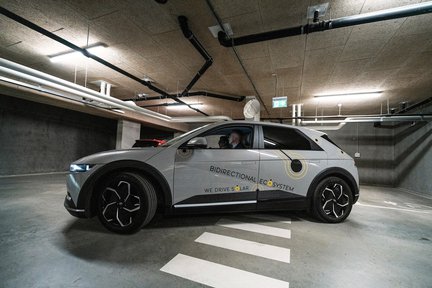
And all of this is done via a system that in principle is fairly inexpensive. "A bi-directional charging station with EMS is not much more expensive than an ordinary charging station. Of course, you need solar panels to be able to charge them and a shared car that return electricity, but these are not gigantic investments. This will make it easier and more feasible to develop small, local smart grids in residential buildings right across the Netherlands, which will provide cheap, green energy and reduce the burden on the current energy grid."
We Drive Solar also sees this as a reason to invest in this system. Robin: "With the electric shared cars, the new energy system and local energy storage, we ensure clean air and fewer cars on the streets. This is how we can contribute to making Utrecht a liveable and healthy city. By working with Heijmans in the long term, we hope to do this for many more cities in the Netherlands."
